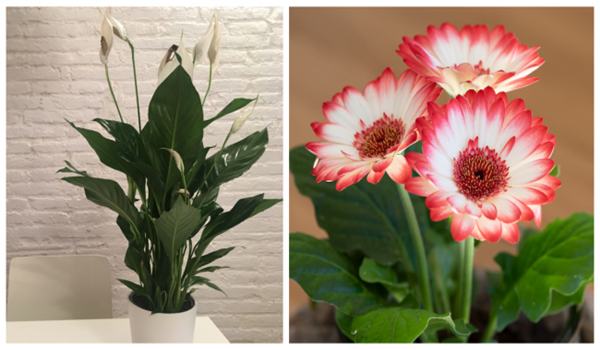The more chemicals we use daily, the more polluted our environment becomes. Therefore, we ended up living surrounded by toxins of all kinds, which endanger our health in various ways.
Fortunately, eliminating them is far from difficult, and in fact, you can do it while decorating your living and working space!
Yet, we talk about indoor plants!
Plants are incredibly beneficial to us. Apart from making our homes and gardens magnificent, they also improve our physical and mental health.
Moreover, during photosynthesis, plants turn carbon dioxide into fresh oxygen and remove toxins from the air we breathe. They can filter substances that have been linked to adverse health effects like headaches, dizziness, eye irritation, and others.
These include formaldehyde (upholstery, air fresheners, glues, and adhesives), benzene (insect sprays, furniture wax), xylene (leather, rubber, permanent markers), trichloroethylene (adhesives, cleaners – tool, carpet, aerosol), and toluene (nail polish, paint, ink and stain removers).
While most of you probably don’t associate NASA with houseplants, in the late ‘80s, the research institute conducted a study, led by Dr. B. C. Wolverton, to test the purifying abilities of indoor plants.
The larger the leaf, the quicker it purifies the air. Dr. Wolverton, therefore, advised fern and ivy plants as they take up the most surface area.
NASA also recommended having at least one plant per 100 square feet (10 square meters).
According to the NASA Clean Air Study, these are the 12 most powerful of them all:
1. Spider plant

This plant cleans the air from formaldehyde and carbon monoxide. The NASA study found that it eliminated 95% of formaldehyde from a sealed plexiglass chamber.
2. English Ivy

It is ideal in case you work with products that contain keratin, like perms, hair coloring, nail polish, and nail polish hardeners, as it eliminates trichloroethylene, formaldehyde, benzene, and xylene. Place it in a low-light area, and water it occasionally.
3. Boston fern

The Boston fern is excellent for the bathroom, as the moisture will keep it hydrated. It cleans the air of xylene and formaldehyde.
4. Red-edged dracaena

Before you renovate the home, make sure you get this plant. It cleans the air from trichloroethylene, which is often added in home improvement materials.
5. Peace lily

Peace lilies soak up mold spores, and filter the air, by carrying water from their root to the leaves, and releasing moisture into the room, a process known as transpiration.
6. Flamingo lily

Apart from being attractive, this plant will also cleanse the air from formaldehyde, ammonia, toluene, and xylene. Note that you should keep it away from your kids and pets.
7. Chinese evergreen

This plant would be great on your desk. It filters out formaldehyde and benzene, but it is toxic, so it should be placed away from your children and pets as well.
8. Weeping fig

Place it in an area exposed to direct sunlight, and you’ll no longer have to worry about having formaldehyde, xylene, and toluene in the air.
9. Bamboo palm

The bamboo palm removes benzene and formaldehyde from the environment. Place it in a sunny area, add fertilizer once a month, and regularly mist it.
10. Devil’s ivy (Money plant)

If you are new to plants, this is a great start. You can water it occasionally, and it does not require much light. Yet, this plant will purify the air from benzene, formaldehyde, and xylene.
11. Snake plant

This is a great bathroom and bedroom plant. It releases oxygen during the night and filters formaldehyde from cleaning products, hair dyes, toilet paper, etc.
12. Gerbera

Its green leaves purify the air from formaldehyde, benzene, and trichloroethylene, while its colorful flowers will brighten up the room!
Sources: www.goodhousekeeping.com


